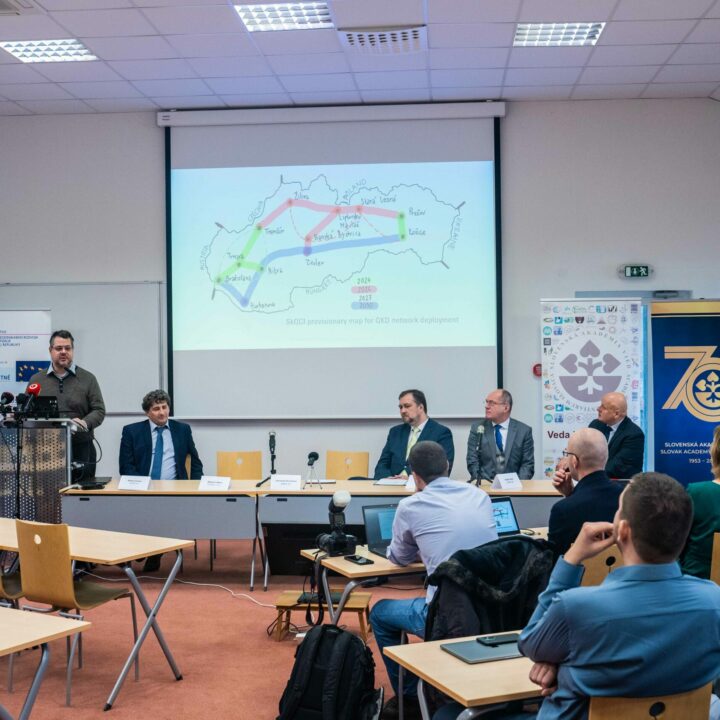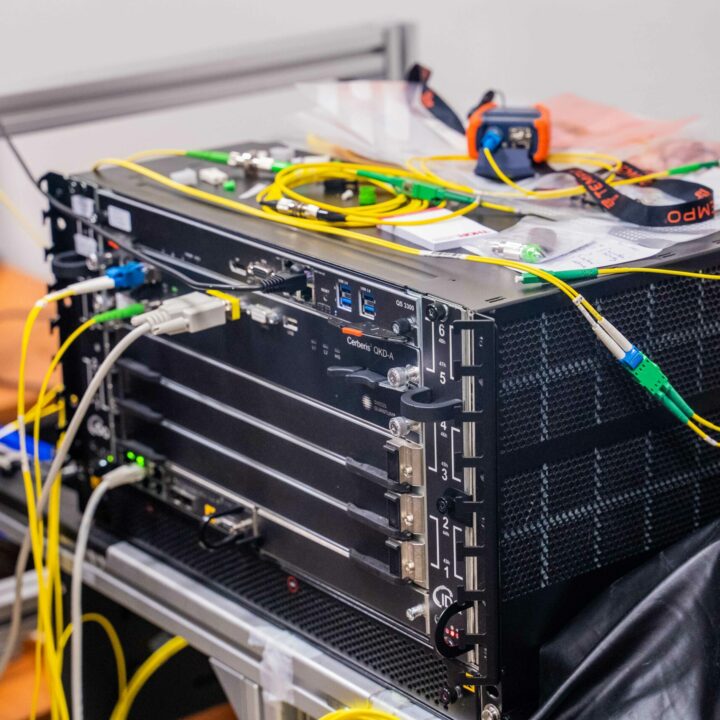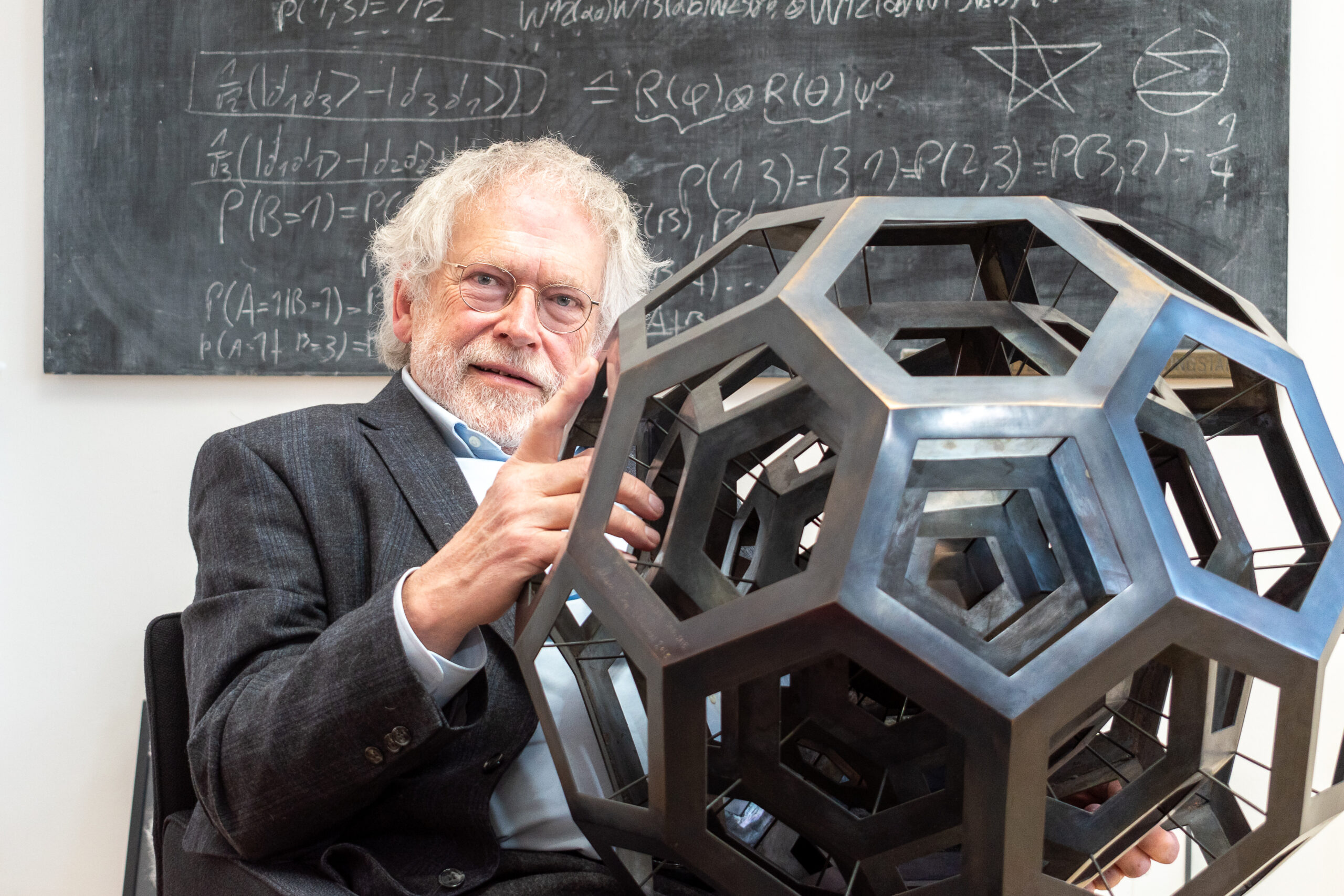Anton Zeilinger: Pioneer of Quantum Communication
Anton Zeilinger is one of the most prominent figures in modern quantum physics. The Austrian experimental physicist became renowned for his pioneering research on quantum entanglement, quantum state teleportation, and experiments verifying the fundamental principles of quantum mechanics. His work laid the groundwork for practical applications such as Quantum Key Distribution (QKD) and the concept of a quantum internet. For his outstanding contributions to the development of quantum information science, he was awarded the 2022 Nobel Prize in Physics, together with Alain Aspect and John Clauser, “for experiments with entangled photons, establishing the violation of Bell inequalities and pioneering quantum information science.”
From Fundamental Tests to Secure Communication
Anton Zeilinger was born in 1945 in Ried im Innkreis, Austria. He studied physics at the University of Vienna, earning his PhD in 1971 under Helmut Rauch in the field of neutron physics. After a research stay at the Massachusetts Institute of Technology (MIT) and his habilitation at the Vienna University of Technology (1979), Zeilinger became one of the leading figures of a new generation of physicists exploring the conceptual and philosophical aspects of quantum theory — laying the foundation for modern quantum technologies.
After returning from the USA, he worked at the Vienna University of Technology. In 1990, he became Professor of Experimental Physics at the University of Innsbruck, where he carried out unique experiments with quantum-entangled photons — a phenomenon that Einstein once described as “spooky action at a distance.” Zeilinger demonstrated that entanglement is not merely a philosophical curiosity but a phenomenon with enormous potential for quantum information technologies. His experiments on quantum teleportation, superdense coding, and entanglement swapping earned him worldwide recognition and numerous prestigious awards, culminating in the Nobel Prize.
Zeilinger was among the first to investigate multi-particle entanglement. Together with Daniel Greenberger and Michael Horne, he formulated the GHZ paradox, which, like Bell’s inequalities, demonstrates quantum nonlocality — but without the need for statistical evaluation. Today, the GHZ state remains one of the most important examples of a multi-particle entangled state.
In 1999, Zeilinger moved to the University of Vienna, where his research shifted toward quantum technologies and macroscopic quantum phenomena. In 2003, together with colleagues, he founded the Institute for Quantum Optics and Quantum Information (IQOQI) at the Austrian Academy of Sciences (ÖAW), where he continues to conduct research. Thanks to his leadership, Vienna became one of the world’s hubs of quantum cryptography. It was here that the idea of using satellites for global quantum-secured communication was born.
In Vienna, Zeilinger’s team demonstrated the transmission of entangled photons through open air between laboratories on opposite sides of the Danube River. Later, in 2013–2014, they carried out a similar experiment in the Canary Islands over a distance of 144 km, showing that satellite-based quantum communication was feasible.
These achievements led Zeilinger to his most ambitious goal yet – intercontinental quantum communication between Europe and China. In 2017, the Austrian Academy of Sciences, led by Zeilinger, and the Chinese Academy of Sciences (headed by his former student and collaborator Jian-Wei Pan) successfully conducted a quantum-encrypted video call over 7,400 km, using the Micius satellite, orbiting about 500 km above Earth. This groundbreaking experiment paved the way toward a global quantum network.
The First Quantum-Secured Cross-Border Connection: “Physics Enlightens the World”
Among the world-renowned scientists Zeilinger has collaborated with is Vladimír Bužek, a Slovak theoretical physicist and internationally recognized expert in quantum information theory, quantum optics, and quantum cloning. In 2000, Bužek founded the Research Center for Quantum Information (RCQI) at the Institute of Physics of the Slovak Academy of Sciences, focusing on theoretical quantum research. Together with Zeilinger, RCQI participated in several European Commission-funded consortia and coordination actions.
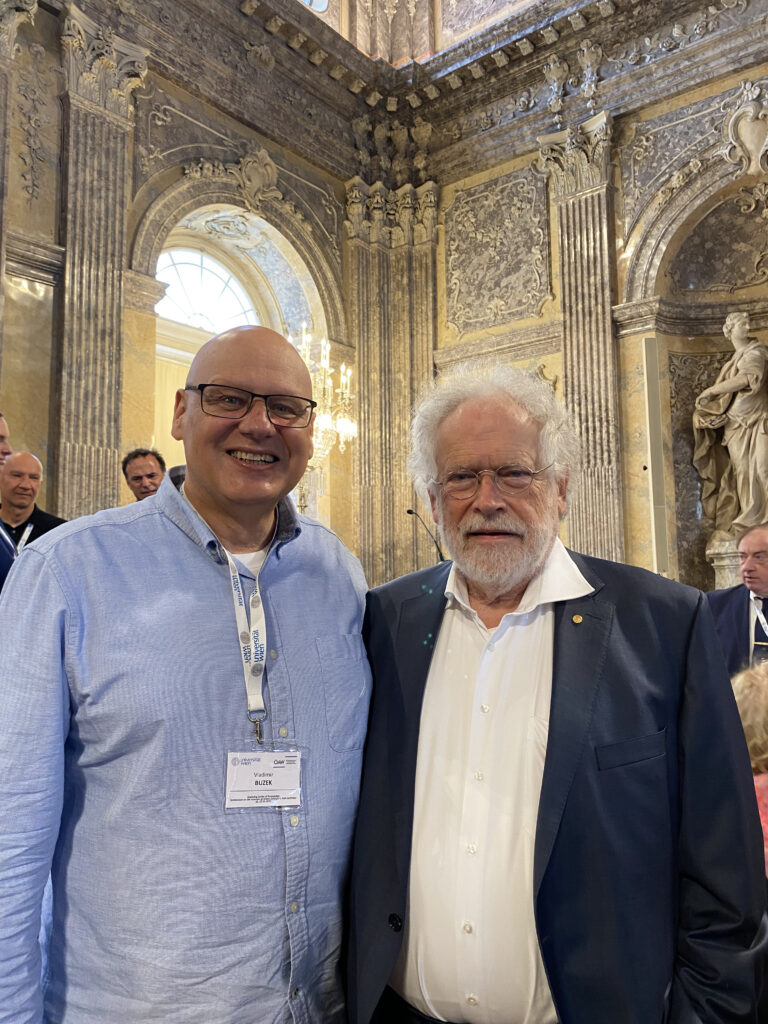
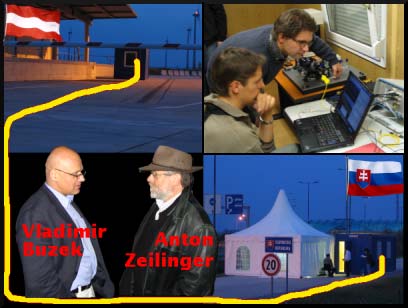
On April 18, 2005, marking the 50th anniversary of Albert Einstein’s death, a beam of light was sent on a journey around the Earth from Princeton, USA. The signal traveled through trans-Pacific optical cables to Asia, continued through Europe to the United Kingdom, and back to Princeton — even reaching Australia, Africa, and South America. Slovakia also took part in this global celebration as part of the International Year of Light. Exactly 20 years ago, Slovak physicists from RCQI, in collaboration with Austrian colleagues from Zeilinger’s group, carried out a cross-border quantum experiment between Slovakia and Austria. Using entangled photons, they transmitted the message “Physics enlightens the world” across the border — marking the first ever quantum-encrypted information exchange between two countries.
This experimental collaboration was renewed more than a decade later. A. Zeilinger, V. Bužek, and R. Ursin jointly launched the Quapital initiative, aiming to connect the capitals of Central European countries through a quantum network. This vision became the foundation for the quantum optical link between Slovakia and Austria. The quantum line connected Bratislava and Vienna with St. Pölten, covering a distance of 248 km. Its purpose was to test the long-term stability of entanglement-based quantum key distribution. The link operated successfully for over two years and remains active today. The subsequent skQCI project (Slovak Quantum Communication Infrastructure) integrated Slovakia into the European initiative EuroQCI, which aims to build a pan-European quantum communication infrastructure.
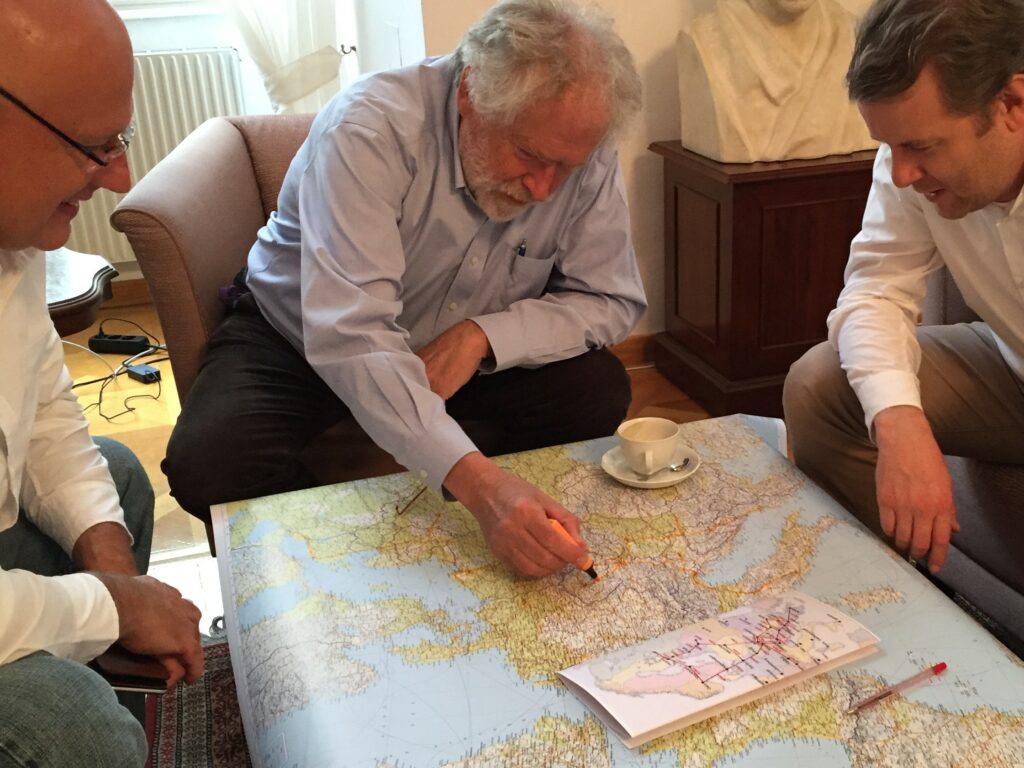
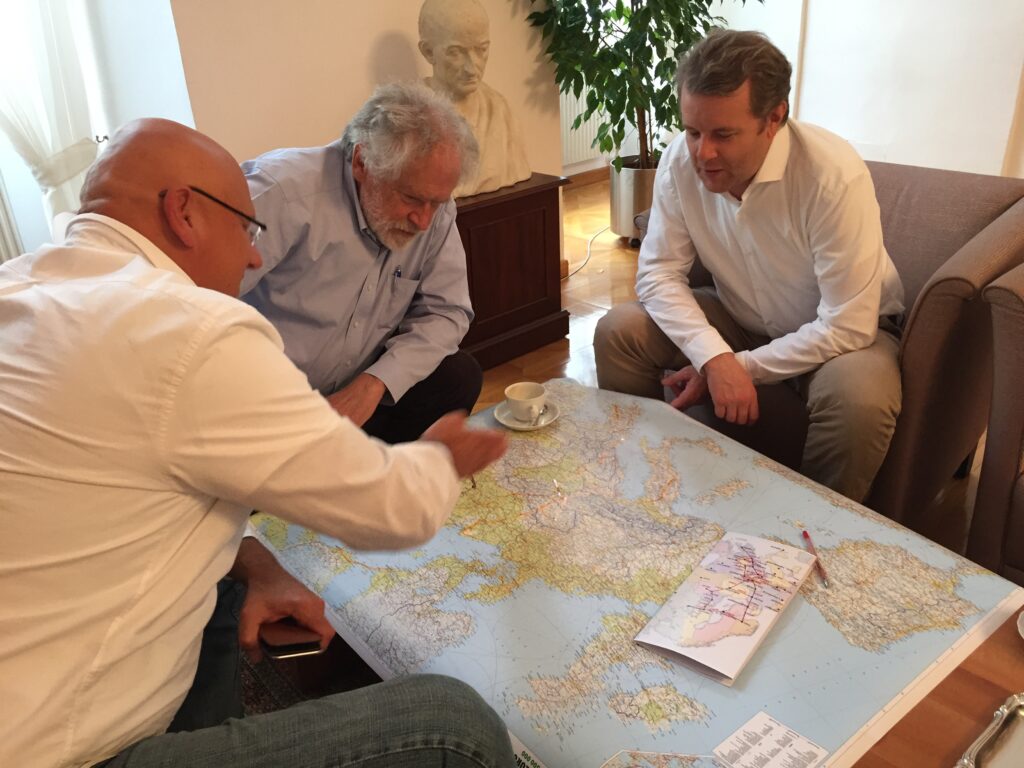
Conclusion
Through his work, Anton Zeilinger not only unveiled the fundamental principles of quantum mechanics but also demonstrated how these principles can be transformed into practical technologies for quantum communication. His experiments have become models for the next generation of quantum communication networks. In connection with both past and ongoing research activities at the Institute of Physics of the Slovak Academy of Sciences, it is no surprise that in this year — as Anton Zeilinger celebrates his 80th birthday — he will be awarded the Honorary Doctorate of the Slovak Academy of Sciences.


